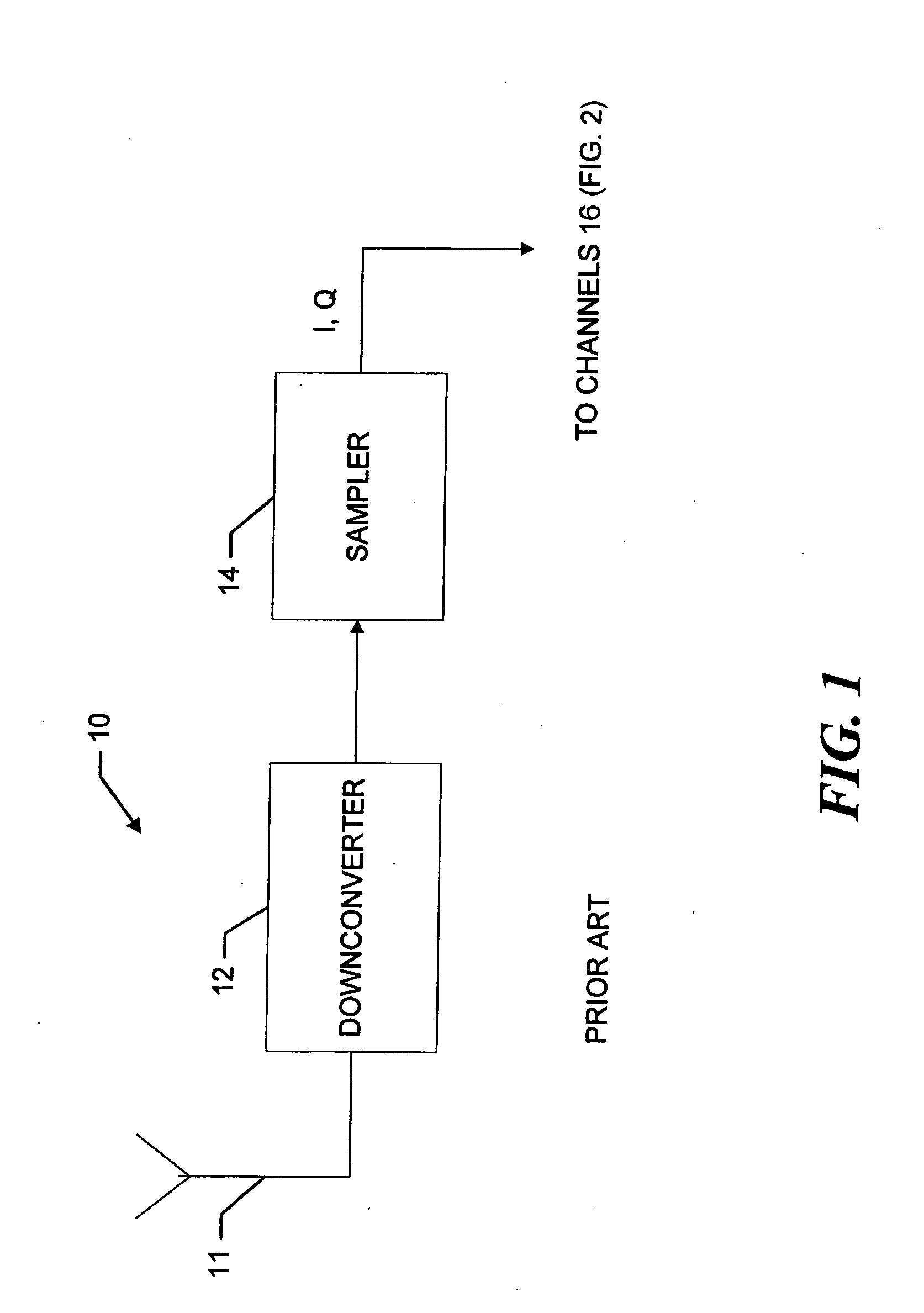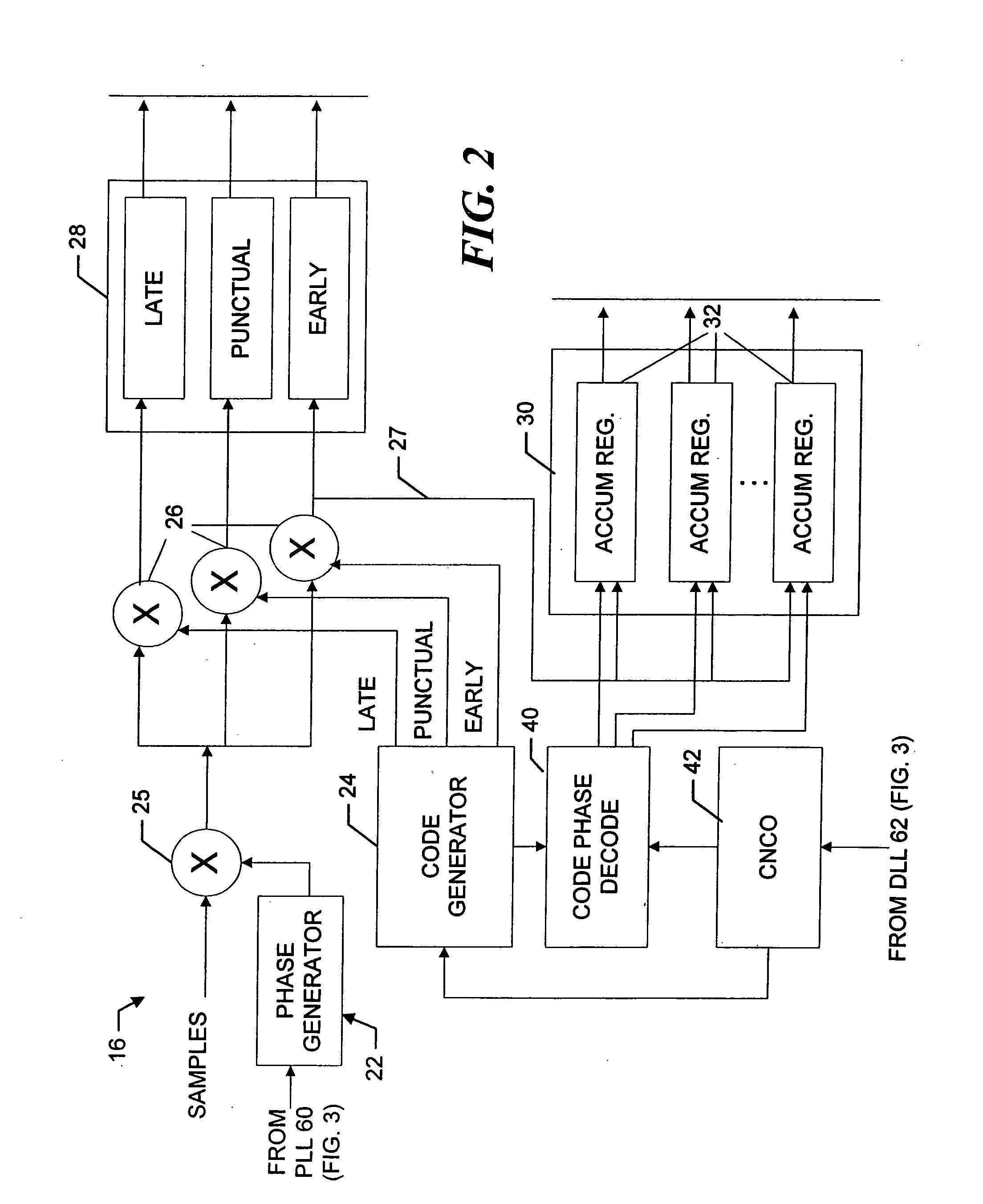Apparatus for and method of determining quadrature code timing from pulse-shape measurements made using an in-phase code
a quadrature code and pulse-shape technology, applied in the field of systems for measuring the pulse shape of broadcast spreadspectrum signals, can solve the problems of gps receivers not being able to directly acquire and track p-codes, adversely affecting code synchronization operations, and affecting the accuracy of the received signal, so as to eliminate associated biases
- Summary
- Abstract
- Description
- Claims
- Application Information
AI Technical Summary
Benefits of technology
Problems solved by technology
Method used
Image
Examples
Embodiment Construction
[0036] Referring to FIG. 1, a receiver 10 receives over an antenna 11 a composite signal that includes direct path signals and associated multipath signals. A downconverter 12 and sampler 14 operate in a conventional manner, to downconvert the received composite signal and in the exemplary embodiment take sequential samples of the downconverted signal. The sequential samples are provided to the respective channels 16 (FIG. 2).
[0037] Referring now to FIG. 2, a given channel 16 which in the example demodulates an in-phase PRN code, that is, a PRN code that is transmitted on the in-phase channel of the satellite signal, includes a mixer 25 that removes the carrier from the samples by mixing them with an estimate of the associated carrier phase. Thus, in a known manner, the sequential samples are each mixed with both sine and cosine transformations of the estimated carrier phase to produce a corresponding complex I and Q sample pair. The carrier phase estimate is generated by a phase g...
PUM
 Login to View More
Login to View More Abstract
Description
Claims
Application Information
 Login to View More
Login to View More - R&D
- Intellectual Property
- Life Sciences
- Materials
- Tech Scout
- Unparalleled Data Quality
- Higher Quality Content
- 60% Fewer Hallucinations
Browse by: Latest US Patents, China's latest patents, Technical Efficacy Thesaurus, Application Domain, Technology Topic, Popular Technical Reports.
© 2025 PatSnap. All rights reserved.Legal|Privacy policy|Modern Slavery Act Transparency Statement|Sitemap|About US| Contact US: help@patsnap.com



